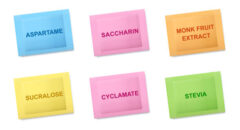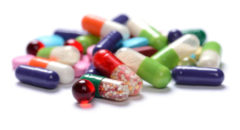
Sugar reduction is challenging. Mindful eating is necessary to maintain blood sugar levels. Meal planning, hydration, sleep, and exercise may help. You’re OK if you eat balanced meals. But don’t judge yourself if you eat a decadent dessert.
Get Enough Protein
High-protein meals make you feel full faster and longer. Protein boosts gut hormones that suggest fullness and satisfaction.
Instead of a sweet snack, take a protein shake for a fast snack to control cravings. Protein-rich foods include:
- beans, hummus, lentils, almonds, tofu
- salmon, flounder, crab, scallops
- chicken, turkey, cheese, eggs
- beef, pork, veal, lamb
Replace mayonnaise, cream cheese, and other creamy items with plain Greek yogurt to boost protein consumption. Vanilla protein drinks are great milk substitutes for dry cereal, coffee, and porridge.
Plan Your Meals
Organizing your meals for the day is essential, but you don’t need Instagram-worthy dishes or containers. This prevents midday vending machine or break room doughnut temptations.
Follow the half-plate rule. Half your plate should include leafy greens, one-quarter of lean protein, and one-quarter of carbohydrates.
Christa Gonzalez RD, CNSC, suggests preparing meals to avoid consuming high-carbohydrate convenience items when hungry. Dietitians can help you plan meals. It’s essential to organize your meals for the day, but you don’t need Instagram-worthy dishes or containers. This prevents midday vending machine or break room doughnut temptations.
RELATED: Sugar Vs. Sweetener Substitutes: The Good & Bad
Get More Fiber
Fiber regulates appetite and improves insulin sensitivity. Fiber-rich foods include:
- Beans
- fresh produce, particularly with edible skins, seeds, and nuts
- brown rice, quinoa, and oats
Talk to your doctor about over-the-counter fiber pills if you still have trouble obtaining enough fiber. Avoid sweet gummies, which might hide sugars.
Splurge Sometimes
Binging may occur from over-restricting food. Restricting foods makes you crave them more. This may even cause








